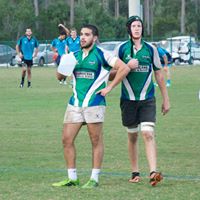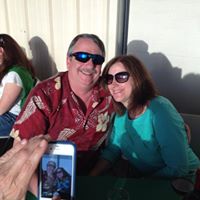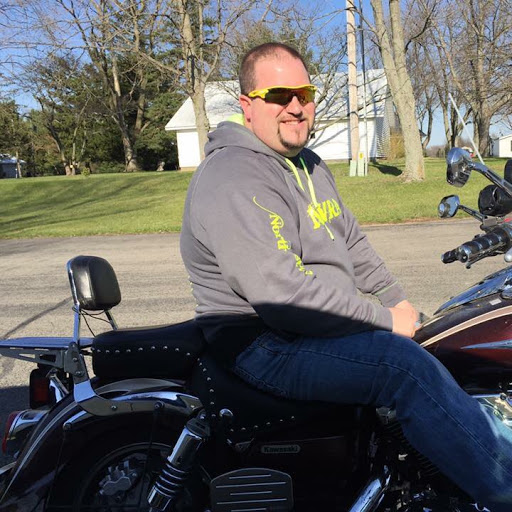Craig L Fischer
age ~57
from Saint Louis, MO
- Also known as:
-
- Craig Lee Fischer
- Graig Lee Fischer
- Crieg Fischer
- Phone and address:
- 7251 Christopher Dr, Saint Louis, MO 63129
Craig Fischer Phones & Addresses
- 7251 Christopher Dr, Saint Louis, MO 63129
- 4855 Colony Church Rd, Saint Louis, MO 63129 • 3144648192
- 2515 Captiva Dr, Saint Louis, MO 63125 • 3144648192
- 193 Sherman Ave, Saint Louis, MO 63125
- Curryville, MO
- Imperial, MO
- Arnold, MO
Work
-
Position:Executive, Administrative, and Managerial Occupations
Education
-
Degree:High school graduate or higher
Lawyers & Attorneys

Craig Fischer - Lawyer
view sourceOffice:
Cleary Gottlieb Steen & Hamilton LLP
ISLN:
921555986
Admitted:
2011
University:
Cornell University, B.S., 2006
Law School:
Cornell Law University School, J.D., 2010
Name / Title
Company / Classification
Phones & Addresses
Chief Executive Officer
Fischer Surgical, Inc
Business Services at Non-Commercial Site · Whol Medical/Hospital Equipment
Business Services at Non-Commercial Site · Whol Medical/Hospital Equipment
1012 Palmer Ln, Imperial, MO 63052
3143037753, 8666222221
3143037753, 8666222221
Resumes

Craig Fischer
view source
Craig Fischer
view source
Craig Fischer
view source
Craig Fischer
view source
Craig Fischer
view source
Craig Fischer
view source
Craig Fischer
view source
Craig Fischer
view sourceLocation:
United States
Medicine Doctors

Craig Fischer
view sourceSpecialties:
Psychiatry
Work:
Bay Psychiatric Associates
2020 Milvia St STE 300, Berkeley, CA 94704
5108432220 (phone), 5108432227 (fax)
2020 Milvia St STE 300, Berkeley, CA 94704
5108432220 (phone), 5108432227 (fax)
Education:
Medical School
University of California, San Francisco School of Medicine
Graduated: 1972
University of California, San Francisco School of Medicine
Graduated: 1972
Conditions:
Anxiety Phobic Disorders
Attention Deficit Disorder (ADD)
Bipolar Disorder
Depressive Disorders
Attention Deficit Disorder (ADD)
Bipolar Disorder
Depressive Disorders
Languages:
English
Spanish
Spanish
Description:
Dr. Fischer graduated from the University of California, San Francisco School of Medicine in 1972. He works in Berkeley, CA and specializes in Psychiatry. Dr. Fischer is affiliated with UCSF Benioff Childrens Hospital Oakland.
Us Patents
-
Corneal Endothelial Tissue Inserter
view source -
US Patent:8206441, Jun 26, 2012
-
Filed:Jul 9, 2010
-
Appl. No.:12/833794
-
Inventors:William B. Neusidl - Phillipsburg NJ, US
Craig L. Fischer - Imperial MO, US
Greg Gordon Utt - Warrenton MO, US -
Assignee:Fischer Surgical, Inc. - Imperial MO
-
International Classification:A61F 2/16
-
US Classification:623 612
-
Abstract:A device transfers donor endothelial cells to the cornea of a recipient without injuring the cells or the cornea during the transfer process. The device transfers living endothelial cells from a donor to a recipient with minimal or no trauma. The device includes a handle, an irrigation tube lengthwise within the handle, a button upon the handle concentric with the irrigation tube, a tapered nose opposite the button, a forward tube extending outwardly from the nose, and a platform joined to the irrigation tube. The forward tube has an elliptical cross section and two beveled features. The platform has two wings that curl gently around donor tissue upon retracting the platform into the forward tube. The handle has a groove for a stem of a knob that surgeon presses and pulls to move the platform.
-
Medical Instrument For Distraction Or Compression
view source -
US Patent:20090131943, May 21, 2009
-
Filed:Nov 7, 2008
-
Appl. No.:12/267022
-
Inventors:Craig L. Fischer - Arnold MO, US
Greg G. Utt - Warrenton MO, US -
International Classification:A61B 17/58
-
US Classification:606 90
-
Abstract:A medical instrument for use in orthopedic distraction or compression. The instrument has a pair of handles and a pair of blades removably attached to an actuator. The handles and the blades may be attached on either side of the actuator such that the blades may be used on the left or right side of the spine or other structure being distracted or compressed and such that the handles may be removed thus freeing up space in the incision or portal for other instruments. The handles and the blades are connected to the actuator through a ratchet and pawl mechanism whereby pressing the handles together causes the blades to be spread apart at their distal end while maintaining a window between the blades at their proximal ends to optimize visualization of the operative site. Movement of the blades at their proximal ends is amplified at their distal ends.
News

Ramsey hopes to equip police with body cameras
view source- The group's studies of the cameras, researcher Craig Fischer said, show that they strengthen police accountability, prevent confrontational situations, resolve complaints against officers, and improve transparency.
- Date: Aug 14, 2014
- Category: World
- Source: Google

Craig A. Fischer
view source
Craig M Fischer
view source
Jenny Craig Fischer
view source
Craig Fischer II
view source
Craig Fischer
view source
Craig Fischer
view source
Craig Fischer
view source
Craig Fischer
view sourceYoutube
Plaxo

Craig Fischer
view sourceSr Developer at AmphireSolutions
Classmates

Craig Fischer
view sourceSchools:
Mount Tabor Elementary School New Albany IN 1970-1976, Hazelwood Junior High School New Albany IN 1976-1979
Community:
Mary Pease, Gary Darnell, Terry Reed

Craig Fischer
view sourceSchools:
Selz High School Pilot Point TX 1983-1987
Community:
Donald Church, Sheryl Dusang, Heather Farmer, James Cavanaugh

Craig Fischer
view sourceSchools:
Jacksonville High School Jacksonville AR 1980-1984
Community:
Gail Brooker

Craig Fischer
view sourceSchools:
Meyers High School Wilkes-barre PA 1979-1983
Community:
Bobby Thomas

Craig Fischer
view sourceSchools:
Waverly High School Waverly SD 1977-1981
Community:
Kristie Hoggarth, Mary Deville, Bret Henricks, Don Kranz, Leon Zemlicka, Marilyn Althoff, Tim Lindgren, Alison Smith, Dennis Thyen, Greg Wall, Judy Arbogast, Danielle Koustrup

Craig Fischer
view sourceSchools:
St. Margaret School Buffalo NY 1968-1977
Community:
Rebecca Blankenship, Edward Triebell, Daniel Murphy

Craig Fischer
view sourceSchools:
Mexico High School Mexico MO 1990-1994
Community:
Aszura Williams, Jeramie Martin, Roger Henneberry, William Brown, Regina Fox, Wade Jackson, Mark Jones, Lucy Frosch, Monica Hudson, Chris Himmelsbach, Jerry Michael

Waverly High School, Wave...
view sourceGraduates:
Marilyn Holzemer (1966-1970),
Todd Britzman (1982-1986),
Jerald Cordell (1993-1996),
Craig Fischer (1977-1981)
Todd Britzman (1982-1986),
Jerald Cordell (1993-1996),
Craig Fischer (1977-1981)
Myspace
Flickr
Googleplus

Craig Fischer

Craig Fischer

Craig Fischer

Craig Fischer

Craig Fischer

Craig Fischer

Craig Fischer

Craig Fischer
Get Report for Craig L Fischer from Saint Louis, MO, age ~57














